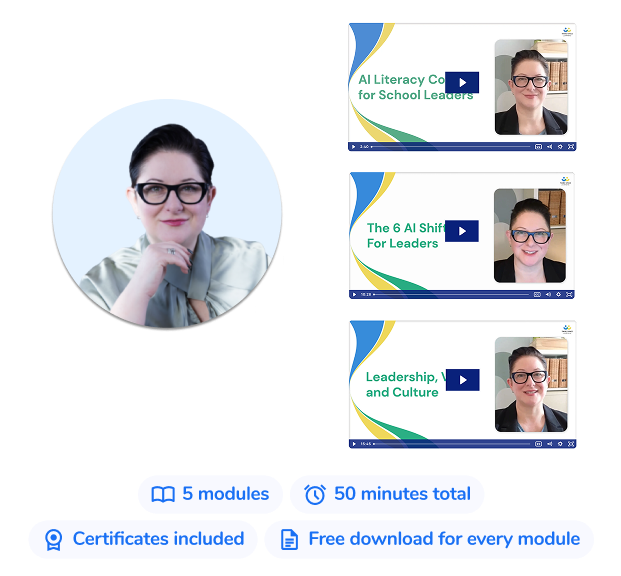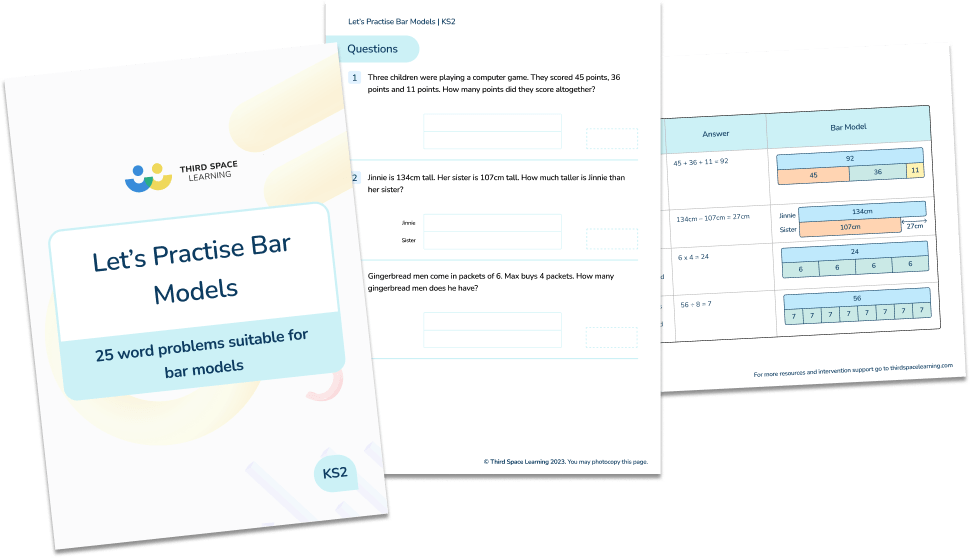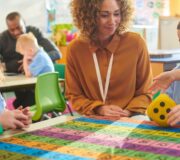Bar Modelling Year 6 Multi-Step Word Problems for KS2 SATs
Bar Modelling your way through multi-step word problems is the latest silver bullet in primary school maths for good reason. Here I look at how you can use the bar model to solve the sorts of Year 6 word problems pupils will face in their KS2 SATs.
The 2014 national curriculum and new KS2 SATs, despite initial unhappiness, has achieved what is, in many ways, a positive shift in the way maths is taught.
The three main aims of reasoning, problem solving and fluency have encouraged teachers to develop an understanding of mastery maths, in particular maths mastery resources, and seek further ways to encourage conceptual understanding, rather than just teaching maths tricks or rules.
So teachers have looked towards the Asian maths approach of countries who apparently churn out mastery-level mathematicians by the thousands for inspiration and now we are learning to teach the ‘why’ rather than just the ‘how’ of maths.
Much of our teaching at Key Stage 2 is therefore dedicated to supporting children how to solve problems, often those based ‘loosely’ on real life maths.
The impact of bar modelling
Hailing from Singapore, with its champion being Dr. Yeap Ban Har, the bar model method seeks to provide a visual for the inner workings of maths problems.
What is a bar model? By using a pictorial representation of the maths question in hand you are able to visually represent something that can be challenging to comprehend purely conceptually.
There are several stages to bar modelling, from the quite basic part-whole bar model to a more complex comparative bar model (pictured below) for multi-step and 2-step word problems.
Bar models are adaptable and students can deploy a fraction bar model, or use bar model multiplication to solve problems.

Question: Frank has 3 times as much money as Molly. After Frank spent £60 and Molly spent £10 they each had an equal amount of money left. How much money did Frank have at first?
Answer: As we can see from the bar model each of the larger green units must be worth £25 so while Molly started with £25, Frank had £75 at first.
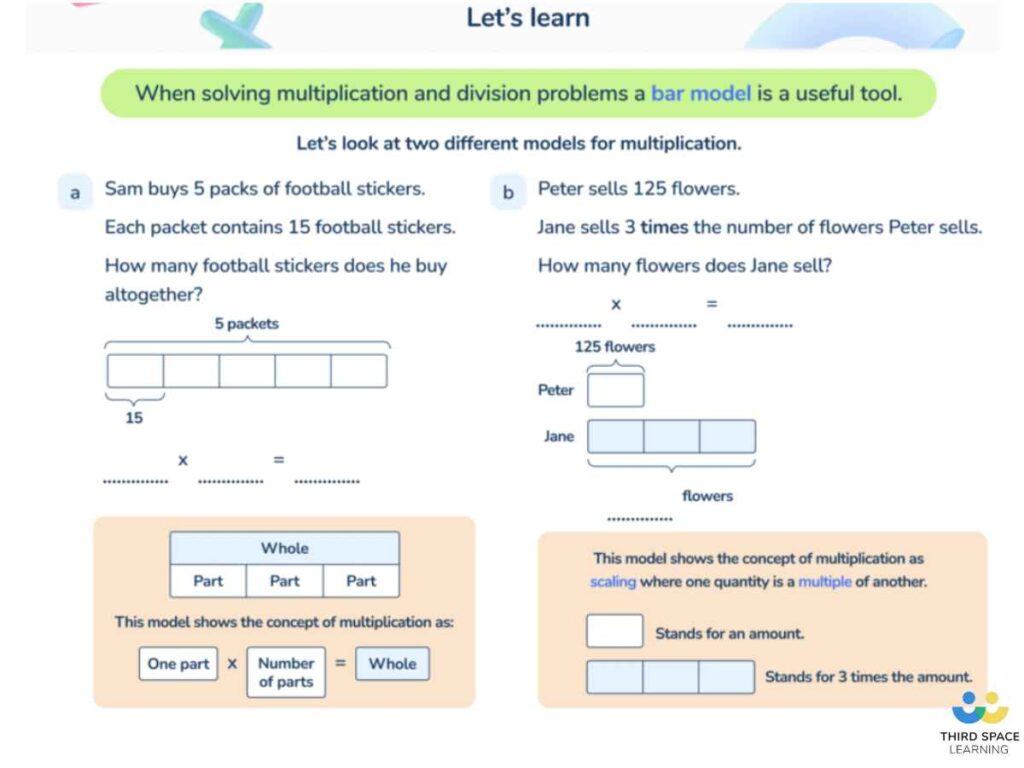
Read more: What Is Part Whole Model?
Let's Practise Bar Model Word Problems: KS2 Worksheet
25 scaffolded word problems around the four operations to practise word problems for KS2
Download Free Now!Introducing my Year 6 to bar modelling to solve SATs word problems
Having only introduced bar modelling to Year 6 recently I wanted to find a way to make their new-found skills useful in their approach to answering the kind of year 6 word problems that appear in the SATs.
Nick Hart’s approach to using bar modelling for problem solving is foundational to the approach I’ve been trialing. His blog post ‘Throwing Out That Old RUCSAC‘ outlines three different underlying structures for word problems: whole unknown, size of parts unknown and number of parts unknown.
He provides this useful image to demonstrate some typical KS2 maths questions, breaking down which of the key information we require to solve it is unknown:

All of the given examples are of 1-step word problems but in the KS2 SATs they are likely to have at least 2 steps, some of them have 3 or 4.
Having grasped the use of bar models for 1 step problems, I wanted to give my Year 6 a multi-step problem solving process.
Breaking down Year 6 multi-step word problems with structured bar modelling
Essentially, any word problem, regardless of number of steps, is a series of one step problems; children just need to identify the number of steps and the processes that need to be undertaken at each step.
I say ‘just’, but that’s where most children struggle; very often children will complete some of the necessary steps, but not all of them. This was another reason to attempt to provide children with a structured approach to solving these kinds of Year 6 word problems.
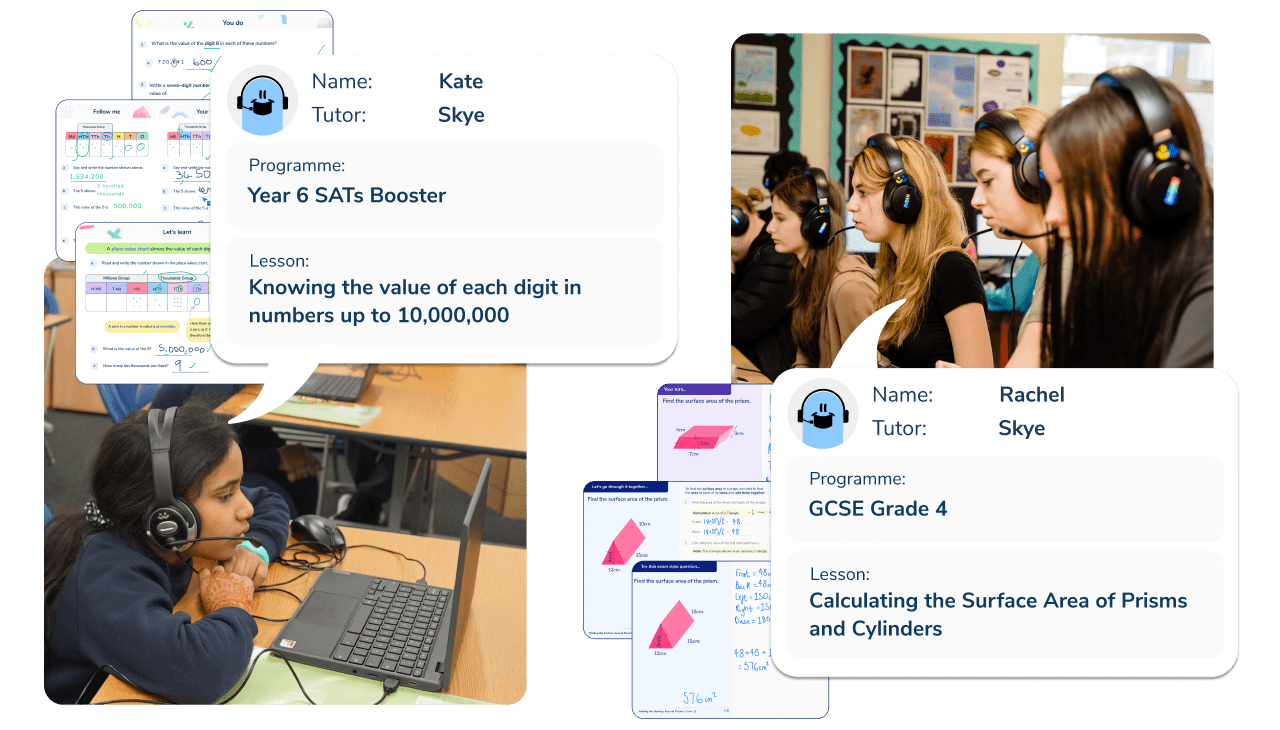
Meet Skye, the voice-based AI tutor making maths success possible for every student.
Built by teachers and maths experts, Skye uses the same pedagogy, curriculum and lesson structure as our traditional tutoring.
But, with more flexibility and a lower cost, schools can scale online maths tutoring to support every student who needs it.
Watch Skye in actionMy Year 6 word problem structure for KS2 SATs

You will note the initial question: What will my answer look like?
This encourages children to think about what their final answer will look like before they embark on the working out and provides a checking point to refer to throughout the exercise: after each step, children write a sentence explaining what they have worked out so far and then match it up to their answer to the question what will my answer look like?
If they don’t match, then they know that they need to continue to work.
Bar modelling a Year 6 word problem step by step
- Draw a bar model to represent just that step
- Identify the underlying structure
- Identify the operation
- Complete the working out
- Write a summary of what they have worked out so far (as mentioned above)
In order to provide initial support we provided a little extra scaffolding to begin with by giving a brief outline of what must be done to complete each part/step of the problem:

These outlines can be made even more explicit. Taking the above example, part 1 could say: divide the cost of the bag of lemons by the number of lemons to find out how much each lemon costs.
Conceptualised bar modelling for KS2 SATs
The idea with this is, of course, that eventually this whole scaffold will be removed and children will be able to visualise these types of Year 6 word problems without even having to draw bar models, although there is nothing wrong with a child drawing a bar model in the KS2 SATs, for example.
In order to support this, we have adapted the grid to remove the necessity for a bar model (although some children do still choose to draw them):
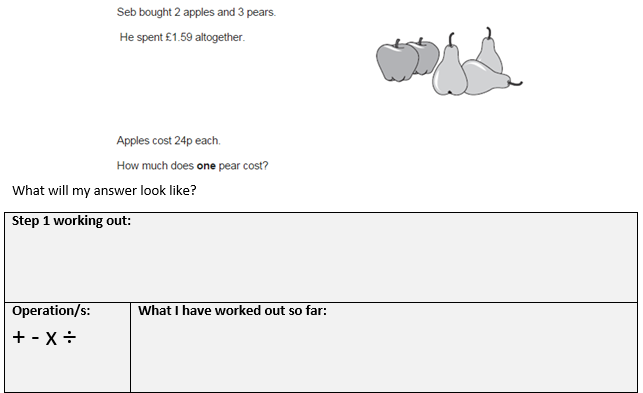
Using this approach, even for a very short amount of time, many children, particularly those who have previously struggled with solving these kinds of maths word problems, have been able to confidently and successfully work through them.
Bar modelling doesn’t work for every Year 6 word problem in the SATs
It is worth mentioning that not all KS2 SATs problems can be solved using this process. This is one of a range of strategies children use during the tests. As such, there are further opportunities for children to practise identifying the different types of maths reasoning questions that can be answered in this way.
However, initially when teaching this technique teachers will need to provide particular examples, like this free resource of Bar Model Maths questions (includes answer sheet).
Whilst this approach is more suited to KS2 SATs questions, there are also two-step problems in the KS1 SATs.
Year 6 word problems from SATs showing bar modelling techniques step by step
Finally, some (scruffy) worked examples:
2016 SATs Paper 3, Question 16: Ratio and Proportion Word Problem

2016 SATs Paper 3, Question 20: Fractions Decimals Percentages Word Problem

2016 SATs Paper 3, Question 13: Fractions Decimals Percentages Word Problem

Looking for more examples of Year 6 word problems?
The following are all examples from the free resource Let’s Practise Bar Models. Download it now for more like this and the answers.
Addition word problem Year 6
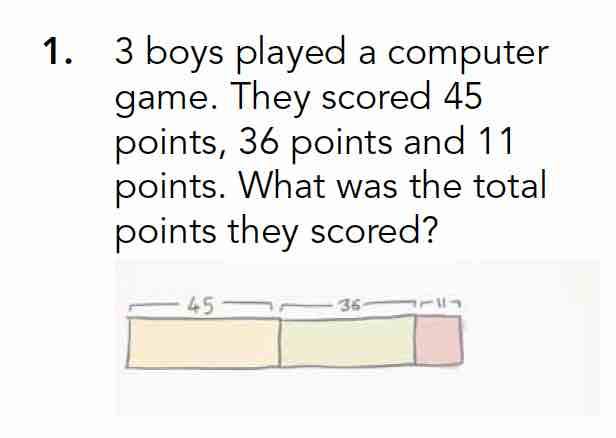
Subtraction word problem Year 6
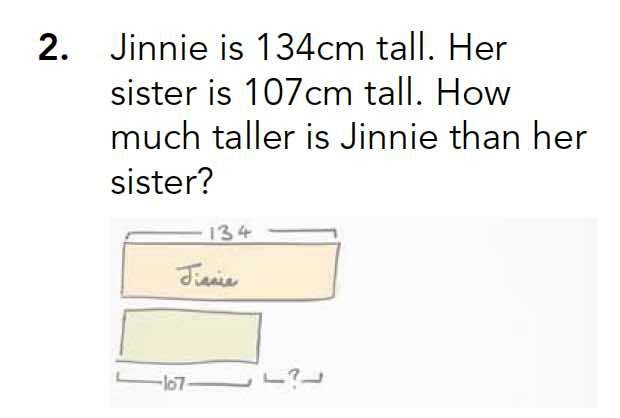
Multiplication word problem Year 6
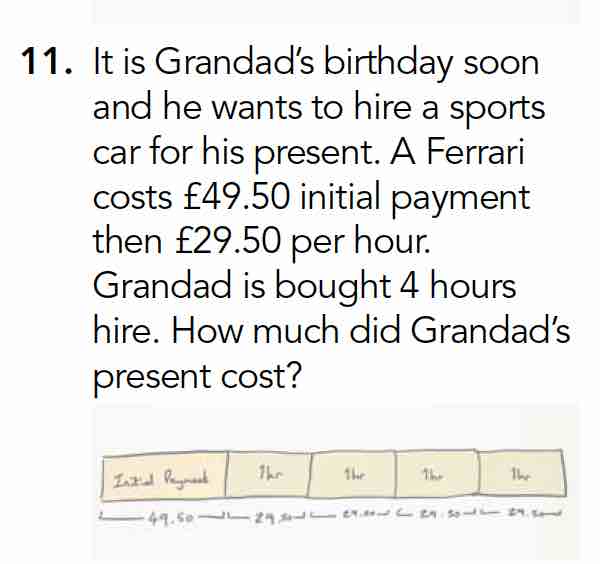
Division word problem Year 6
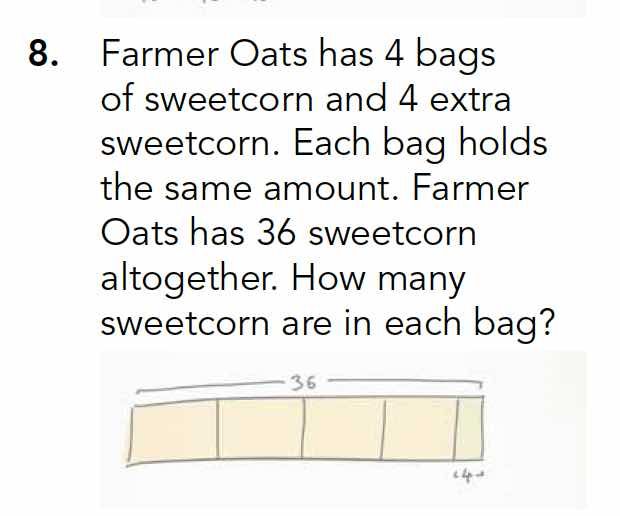
Multiplication and division word problem problems Year 6
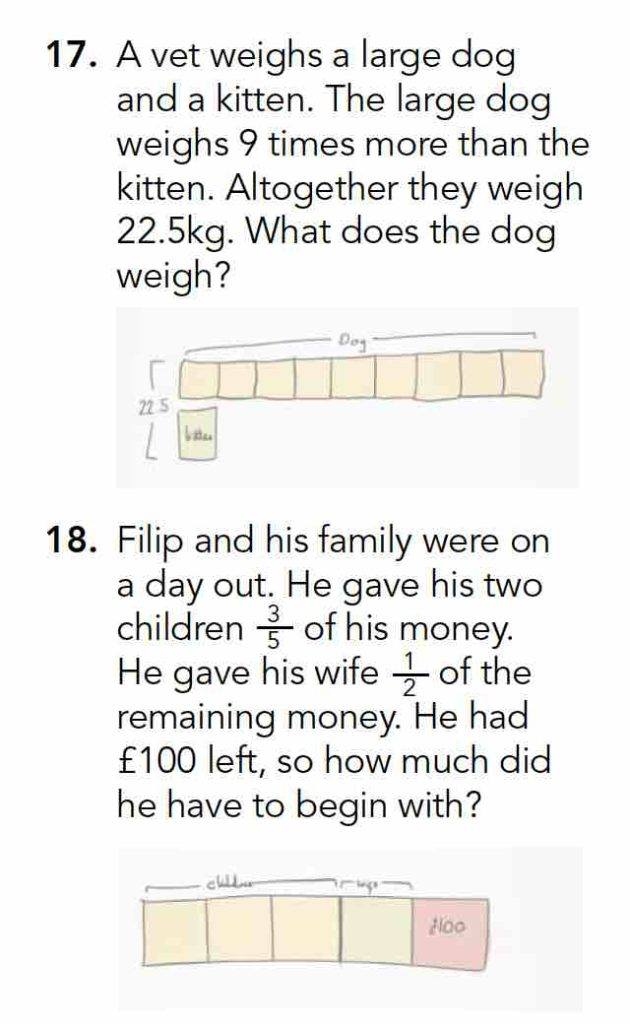
Times tables word problem Year 6
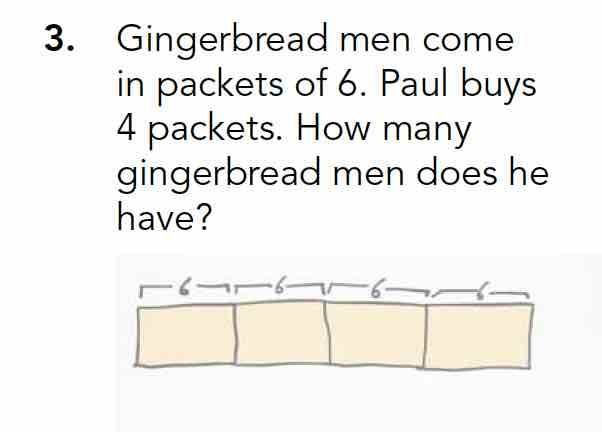
Lots more maths resources such as free SATs papers to practise maths problem solving techniques, and White Rose Maths powerpoints are available to download from the Third Space Maths Hub. Registration is free and available to all school staff and parents.
DO YOU HAVE STUDENTS WHO NEED MORE SUPPORT IN MATHS?
Skye – our AI maths tutor built by teachers – gives students personalised one-to-one lessons that address learning gaps and build confidence.
Since 2013 we’ve taught over 2 million hours of maths lessons to more than 170,000 students to help them become fluent, able mathematicians.
Explore our AI maths tutoring or find out about an online maths tutor for your school.
